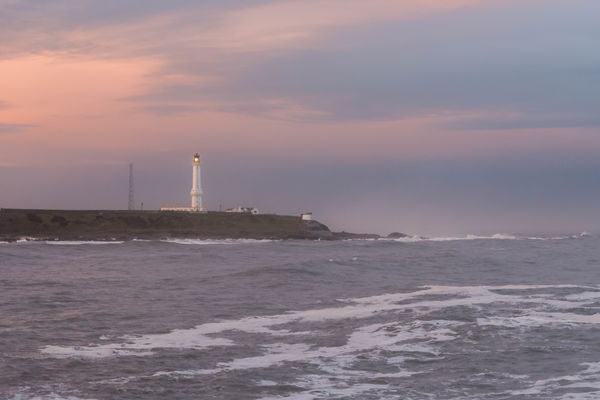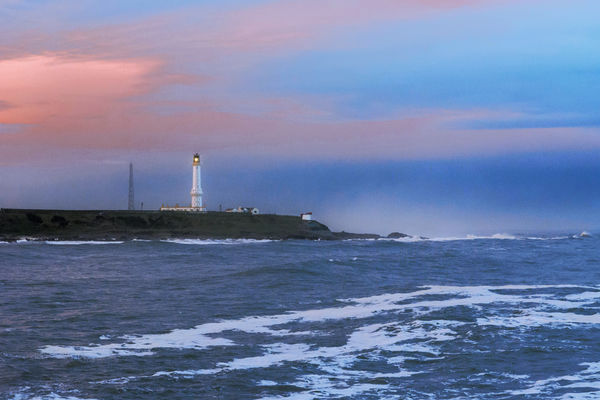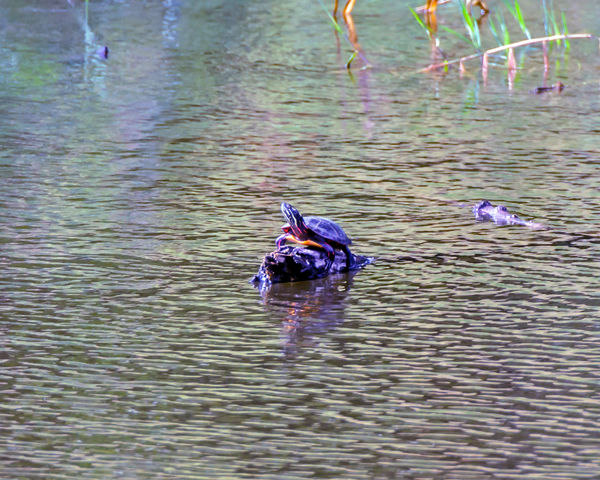An Interesting Observation
Sep 23, 2018 13:28:13 #
Color Cast
Over some time now, I have been noticing in my processing and other's photos posted here that color cast is an issue. Sure, we set our camera's White Balance to what some believe to be the correct setting. But, that only takes care of something called White Balance, supposedly. What I have noticed is that the scene itself lends a cast to the image depending on the predominant color of the scene we are photographing. In an open area, the blue of the sky may be prominent. In a forest setting, a green cast can be seen. In desert scenes a beige cast is present.
It would seem that this cast affects the vibrant colors we had hoped to capture. It tends to reduce contrast and obscure subtle color variations and details in a photograph. Fixing that issue results in a truer to life image with all of the vivid colors we had intended to capture. So, how do we determine if a photograph is biased toward one color or another? It's pretty simple.
Open a photograph, I use PS so the instructions are for that program. Simply click on Filters, then Blur, then average blur. This effectively averages all of the R, B, and G pixels in the image and produces a single color image. If all is balanced, the result should look gray. Otherwise, the result will appear colored. That color is the cast that is predominant in the photograph.
Although I use this step to determine the WB of photos I process, a good many of you know that I use a somewhat unique WB setting in my camera. So, I'm not going to post any photos I've taken to avoid the diversion from this topic. If some of you would care to let me use your posted photos to illustrate this observation, I'd certainly appreciate it.
--Bob
Over some time now, I have been noticing in my processing and other's photos posted here that color cast is an issue. Sure, we set our camera's White Balance to what some believe to be the correct setting. But, that only takes care of something called White Balance, supposedly. What I have noticed is that the scene itself lends a cast to the image depending on the predominant color of the scene we are photographing. In an open area, the blue of the sky may be prominent. In a forest setting, a green cast can be seen. In desert scenes a beige cast is present.
It would seem that this cast affects the vibrant colors we had hoped to capture. It tends to reduce contrast and obscure subtle color variations and details in a photograph. Fixing that issue results in a truer to life image with all of the vivid colors we had intended to capture. So, how do we determine if a photograph is biased toward one color or another? It's pretty simple.
Open a photograph, I use PS so the instructions are for that program. Simply click on Filters, then Blur, then average blur. This effectively averages all of the R, B, and G pixels in the image and produces a single color image. If all is balanced, the result should look gray. Otherwise, the result will appear colored. That color is the cast that is predominant in the photograph.
Although I use this step to determine the WB of photos I process, a good many of you know that I use a somewhat unique WB setting in my camera. So, I'm not going to post any photos I've taken to avoid the diversion from this topic. If some of you would care to let me use your posted photos to illustrate this observation, I'd certainly appreciate it.
--Bob
Sep 23, 2018 14:00:50 #
Here's one with an obvious colour cast. My technique for determining colour casts is to turn the saturation right up (temporarily). If I'm finding it difficult to find a suitable WB setting I turn the saturation up and then experiment with the WB slider to see what gives the most neutral or most suitable look, then drop the saturation setting to a more normal level.
-
-
Sep 23, 2018 14:07:01 #
Interesting method. However, color casts often result from reflected light that seems not to disturb the color of details.
Using the photo below, I followed your blur, average and find a lot of green. But that's what the scene looked like, the green on the water coming from a tree just behind the pond.
I don't want to remove that color cast. Perhaps I don't understand?
Using the photo below, I followed your blur, average and find a lot of green. But that's what the scene looked like, the green on the water coming from a tree just behind the pond.
I don't want to remove that color cast. Perhaps I don't understand?
Sep 23, 2018 14:15:42 #
Thanks for helping out, R.G. Now, the result may not be to your liking, but this is a straight, scientific-more or less-interpretation.
--Bob
--Bob
R.G. wrote:
Here's one with an obvious colour cast. My technique for determining colour casts is to turn the saturation right up (temporarily). If I'm finding it difficult to find a suitable WB setting I turn the saturation up and then experiment with the WB slider to see what gives the most neutral or most suitable look, then drop the saturation setting to a more normal level.
-
-
Sep 23, 2018 14:21:32 #
rmalarz wrote:
Color Cast br br Over some time now, I have been ... (show quote)
I wrote this up a few years ago. It's not foolproof, but it usually gets you in the ballpark.
http://pixeldiarist.blogspot.com/2012/01/correcting-color-cast-in-photoshop.html
Sep 23, 2018 14:23:55 #
Fred, similarly, I've corrected for the color cast in your photo and appreciate that you posted something to illustrate this.
--Bob
--Bob
Fred Harwood wrote:
Interesting method. However, color casts often result from reflected light that seems not to disturb the color of details.
Using the photo below, I followed your blur, average and find a lot of green. But that's what the scene looked like, the green on the water coming from a tree just behind the pond.
I don't want to remove that color cast. Perhaps I don't understand?
Using the photo below, I followed your blur, average and find a lot of green. But that's what the scene looked like, the green on the water coming from a tree just behind the pond.
I don't want to remove that color cast. Perhaps I don't understand?
Sep 23, 2018 14:26:53 #
rmalarz wrote:
Thanks for helping out, R.G. Now, the result may not be to your liking, but this is a straight, scientific-more or less-interpretation.
--Bob
--Bob
It still needs some normalising but it's convincingly removed the colour cast. The graininess may be due mainly to the fact that it's a small jpeg (1.2MB). If I'd wanted to get rid of the colour cast, this would be as good a starting point as any.
Sep 23, 2018 14:30:38 #
Thanks, Bob. How does this method differ from Remove Color Cast?
Also, on my screen, parts of the corrected photo look too blue or violet, as well as saturated, such as the turtle's shell and parts of the stick on right.
I'll experiment further.
Also, on my screen, parts of the corrected photo look too blue or violet, as well as saturated, such as the turtle's shell and parts of the stick on right.
I'll experiment further.
Sep 23, 2018 15:09:37 #
R.G. and Fred, As I mentioned in my reply to R.G., this was completely "mechanical". Additionally, I was working from posted jpg files and not originals. However, from just these two examples, it's reasonably demonstrated that the environment of the subject can contribute and detract from the overall appearance of the final image.
Fred, I am completely unaware of the "Remove Color Cast" feature. I'll have to check that out. Though I tend to prefer to have a bit more control over my processing steps than a simple "push button" approach.
It's rather odd in that being primarily a black and white photographer this would be a sticking point with me. However, having to pay close attention to the colors in a digital image when processing it has caused me to start noticing nuances of color. These are things to which I rarely paid attention until the last few years.
--Bob
Fred, I am completely unaware of the "Remove Color Cast" feature. I'll have to check that out. Though I tend to prefer to have a bit more control over my processing steps than a simple "push button" approach.
It's rather odd in that being primarily a black and white photographer this would be a sticking point with me. However, having to pay close attention to the colors in a digital image when processing it has caused me to start noticing nuances of color. These are things to which I rarely paid attention until the last few years.
--Bob
Sep 23, 2018 15:20:28 #
Thanks, Bob. I think I see what you're observing, and I'll be experimenting.
Sep 23, 2018 15:22:07 #
You're very welcome, Fred.
--Bob
--Bob
Fred Harwood wrote:
Thanks, Bob. I think I see what you're observing, and I'll be experimenting.
Sep 23, 2018 15:56:14 #
Gene, very good article and that's very much along the same lines as I use to correct color cast issues. The part I add to this is to define a black point and a white point, then establish the color bias using the average blur function.
Of course, early on, when I wasn't as familiar with PS as I am now, I decided to write a program that would produce the numbers I needed for RGB values. It would read through the entire image noting the R, G, and B value of each pixel. It would then calculate the average value. I would then open a new window and fill it with the RGB values calculated. Yeah, I had a lot of time on my hands at that time and didn't wanted to continue using my programming skills. It wasn't until much later that I discovered the Average Blur function. Well, that saved a lot of outside of photoshop work.
--Bob
Of course, early on, when I wasn't as familiar with PS as I am now, I decided to write a program that would produce the numbers I needed for RGB values. It would read through the entire image noting the R, G, and B value of each pixel. It would then calculate the average value. I would then open a new window and fill it with the RGB values calculated. Yeah, I had a lot of time on my hands at that time and didn't wanted to continue using my programming skills. It wasn't until much later that I discovered the Average Blur function. Well, that saved a lot of outside of photoshop work.
--Bob
Gene51 wrote:
I wrote this up a few years ago. It's not foolproof, but it usually gets you in the ballpark.
http://pixeldiarist.blogspot.com/2012/01/correcting-color-cast-in-photoshop.html
http://pixeldiarist.blogspot.com/2012/01/correcting-color-cast-in-photoshop.html
Sep 23, 2018 16:01:35 #
Very helpful thread, Bob! And Gene, thanks for the link. I'll try playing with this when I'm off the road.
Andy
Andy
Sep 24, 2018 07:19:19 #
Gene51 wrote:
I wrote this up a few years ago. It's not foolproof, but it usually gets you in the ballpark.
http://pixeldiarist.blogspot.com/2012/01/correcting-color-cast-in-photoshop.html
http://pixeldiarist.blogspot.com/2012/01/correcting-color-cast-in-photoshop.html
Very interesting article Gene. I've bookmarked it and will give it a try. Thanks.
Sep 24, 2018 07:30:37 #
Bob, I know you are well aware that the correct WB is needed to avoid color casts. I also know that I do not need to explain you how to obtain a custom white balance for the subject. I also know that at times we have set a WB and instead the ugly color cast shows its face.
What I like to do when using Photoshop is to go to IMAGE>ADJUSTMENTS>MATCH COLOR and I click on NEUTRALIZE. Many times, more than not, the color cast is corrected but if it is not then I play with FADE. There are other parameters to play with but I seldom use them.
I could then use some saturation and an adjustment curves to finish the job. Other photographers just use a gray card in post to make the correction or sample a middle tonality for the same purpose.
Color Match has worked for me. Give it a try sometime and see if it helps you to correct color casts.
What I like to do when using Photoshop is to go to IMAGE>ADJUSTMENTS>MATCH COLOR and I click on NEUTRALIZE. Many times, more than not, the color cast is corrected but if it is not then I play with FADE. There are other parameters to play with but I seldom use them.
I could then use some saturation and an adjustment curves to finish the job. Other photographers just use a gray card in post to make the correction or sample a middle tonality for the same purpose.
Color Match has worked for me. Give it a try sometime and see if it helps you to correct color casts.
If you want to reply, then register here. Registration is free and your account is created instantly, so you can post right away.











